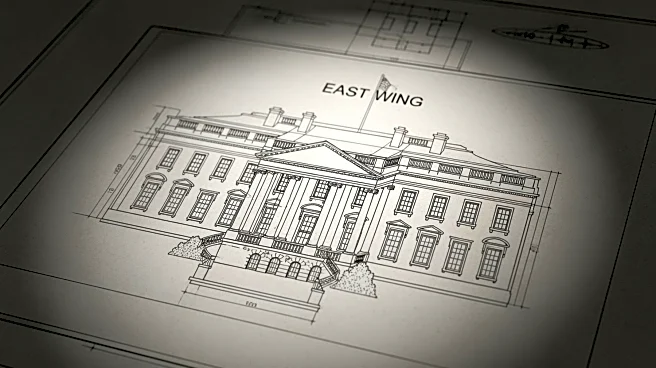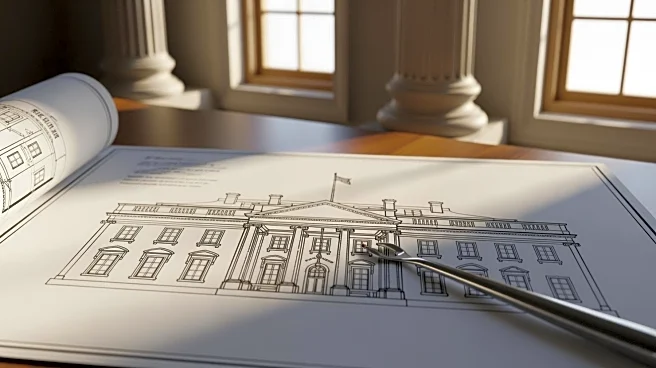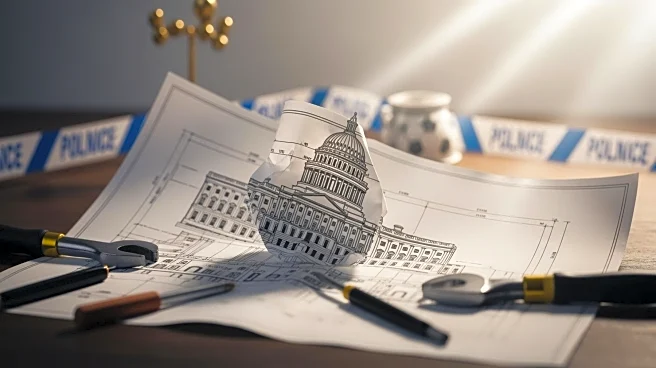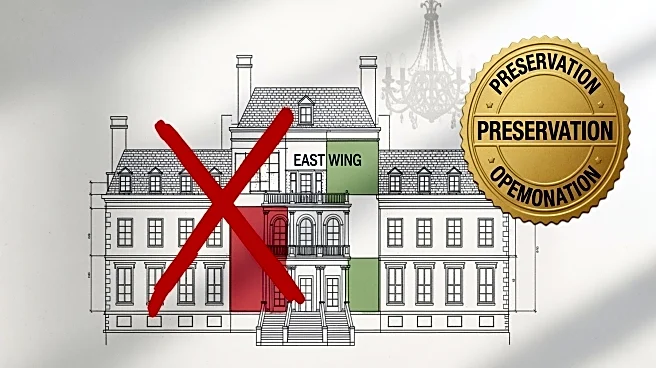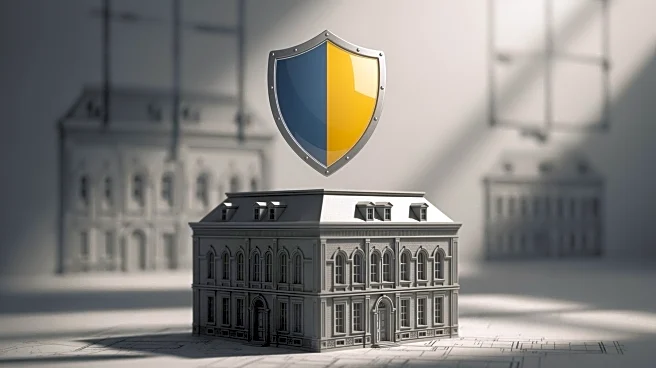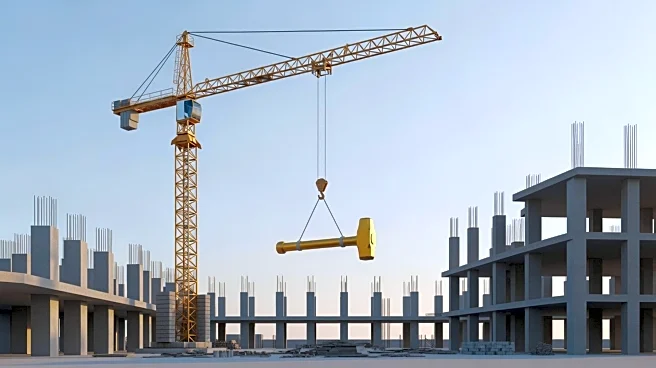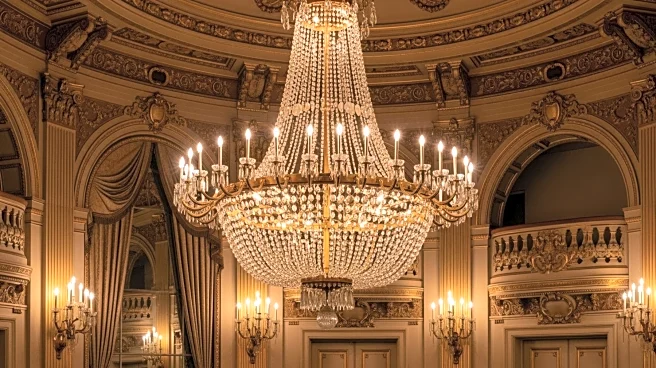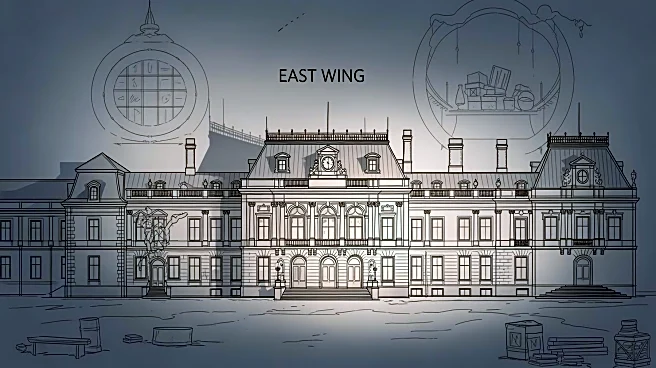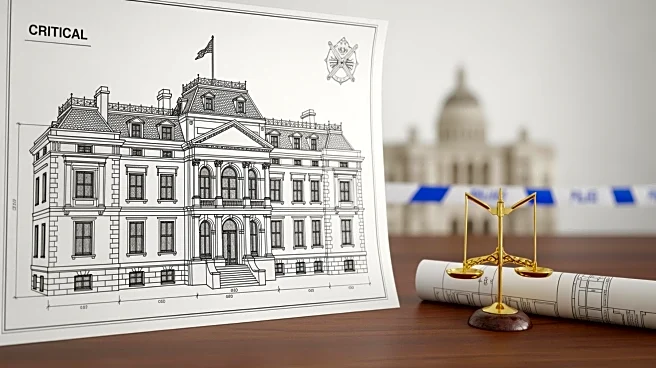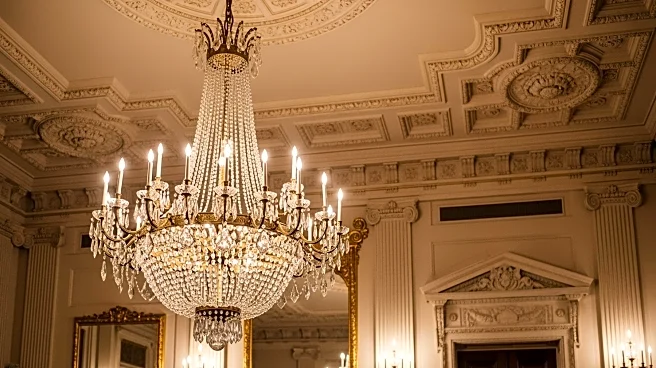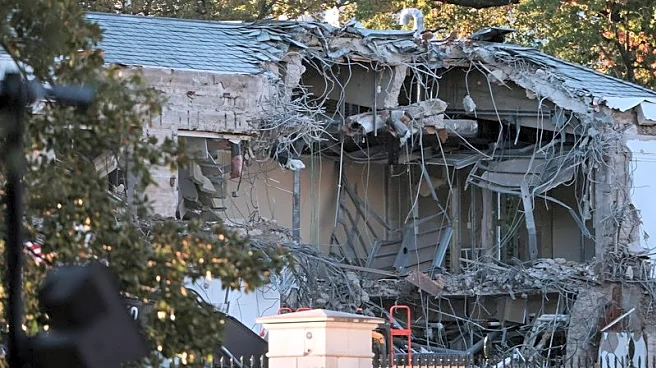What's Happening?
President Donald Trump's renovation plans for the White House include the demolition of the East Wing to construct a new $250 million ballroom. The East Wing, originally developed during President Franklin
D. Roosevelt's administration, has served as office space and a visitor's entrance. The demolition has sparked criticism from historical societies and political figures, with the National Trust for Historic Preservation urging a pause until plans undergo public review. The East Wing's demolition marks a significant change to the White House, which has been a historic landmark for two centuries.
Why It's Important?
The demolition of the East Wing raises concerns about the preservation of historical landmarks and the transparency of renovation processes within public institutions. The project highlights the tension between modernization and the preservation of national heritage, with potential implications for how future renovations at the White House and other historic sites are managed. The ballroom's construction could impact diplomatic and political events, altering the function and appearance of the White House. The lack of public consultation and review has led to criticism and calls for more accountability.
What's Next?
As the demolition progresses, preservation groups and political figures may continue to push for more transparency and adherence to established review processes. The administration's approach to bypassing traditional procedures may lead to further scrutiny and legal challenges. The project's impact on the White House's function and appearance could influence future policies regarding renovations of historic landmarks.
Beyond the Headlines
The project raises ethical questions about the balance between modernization and the preservation of cultural heritage. The lack of transparency and public consultation may set a precedent for future projects, potentially impacting how historic sites are preserved and modernized. The debate over the East Wing demolition reflects broader societal concerns about the preservation of national heritage versus the need for modernization.
